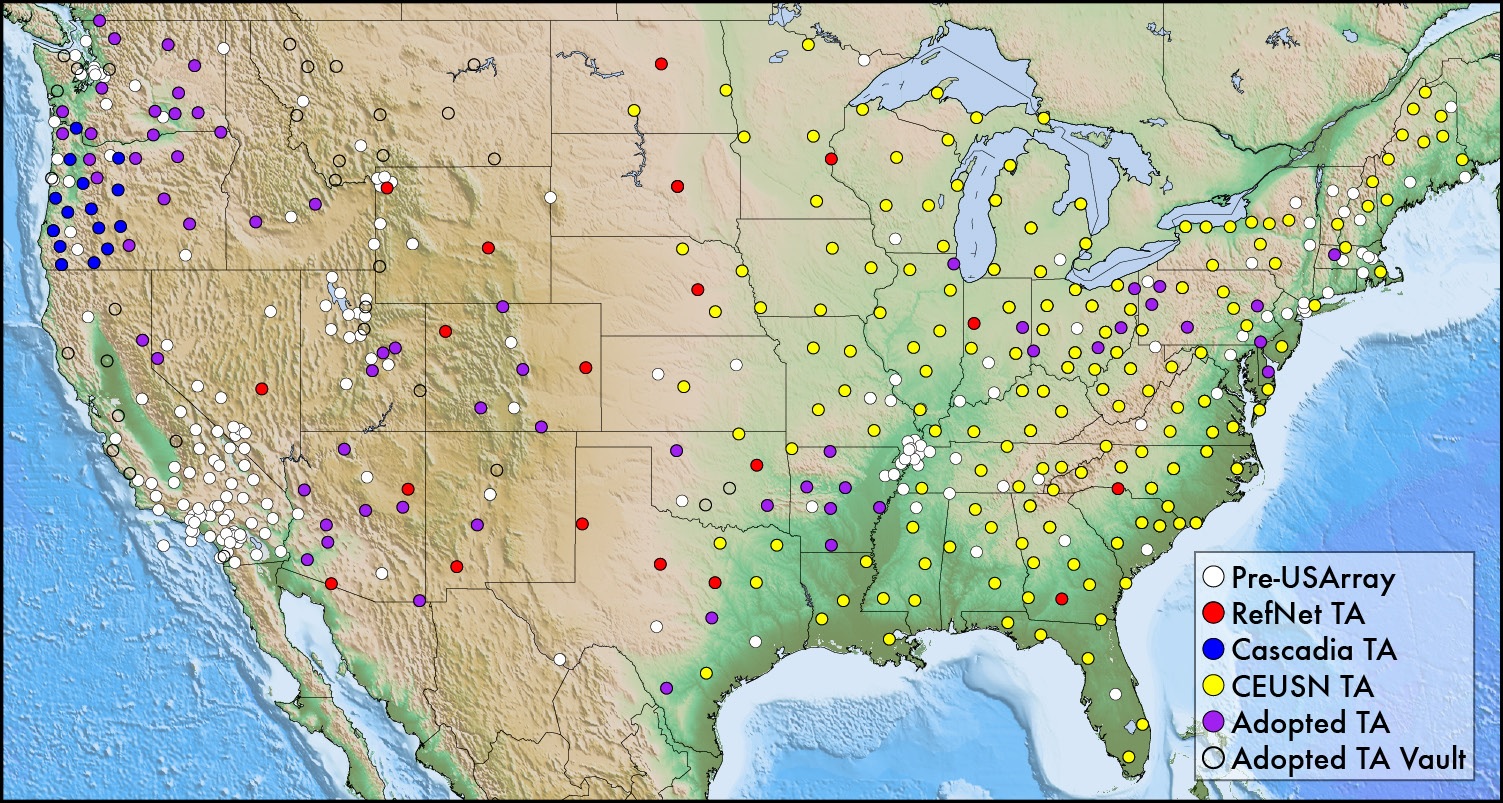By Andy Frassetto, IRIS - Spring 2015
In the fall of 2003, before EarthScope began, approximately 200 modern broadband seismic stations operated across the contiguous United States, primarily for earthquake monitoring. In 2015, nearly 1700 sites have been temporarily occupied by USArray Transportable Array stations. As the USArray TA concludes its operations in the Lower-48 and transitions to locations in Alaska and adjacent northwestern Canada, it leaves behind a substantial legacy.
About 260 former TA stations have been adopted or are continuing to operate in various capacities. The USArray Reference Network continues to operate 20 TA stations as part of a permanent backbone of stations. In addition, regional seismic networks, universities, and state geological surveys have or plan to adopt 81 TA stations, with some still being operated by IRIS as part of its Education and Research Network or “EARN” program. Finally the Federal government, through the National Science Foundation, supports the operation of 159 TA stations under the Central and Eastern United States Network initiative through at least 2017. The CEUSN stations have been reconfigured to record at 100 samples per second and 34 of them now been equipped with strong motion accelerometers, making this network an excellent platform to better understand seismic hazards, including those from induced seismicity, as well as to continue to explore the scientific questions posed by EarthScope. Altogether, these high-quality, real-time, long-term deployed broadband seismic stations have fundamentally improved the ability to monitor earthquakes and conduct seismology research in North America.
During its first decade, the Transportable Array recorded thousands of local, regional, and teleseismic earthquakes. These data, which are open and freely available for download to anyone around with the world, have already contributed to expanding our understanding of our planet and inspiring the next generation of earth scientists. Similar opportunities will undoubtedly follow as the Transportable Array deploys new stations and upgrades existing permanent stations across Alaska and adjacent portions of Canada from 2014-2018.
Top image: Location of broadband seismic stations operating in the continental US before EarthScope (white circles). The Transportable Array leaves behind 260 new “legacy” stations (all non-white circles).





